We need your consent to use the individual data so that you can see information about your interests, among other things. Click "OK" to give your consent.
ASTM D2007-11
Standard Test Method for Characteristic Groups in Rubber Extender and Processing Oils and Other Petroleum-Derived Oils by the Clay-Gel Absorption Chromatographic Method
STANDARD published on 1.5.2011
The information about the standard:
Designation standards: ASTM D2007-11
Note: WITHDRAWN
Publication date standards: 1.5.2011
SKU: NS-19015
The number of pages: 8
Approximate weight : 24 g (0.05 lbs)
Country: American technical standard
Category: Technical standards ASTM
The category - similar standards:
Annotation of standard text ASTM D2007-11 :
Keywords:
clay-gel absorption, elution chromatography, hydrocarbon type, liquid chromatography, petroleum derived oils, rubber extender oils, rubber processing oils, Adsorption--petroleum products/applications, Aromatic compounds, Aromatic hydrocarbons (AHs), Azobenzene activity, Characteristic groups, Clay-gel adsorption test, Fractionation products, Gel absorption chromatography, Insolubles removal, Oils, Pentane-insolubles content, Petroleum oils, Polar aromatics, Processing oils, Rubber extender oils
Additional information
| Significance and Use | ||||||
|
The composition of the oil included in rubber compounds has a large effect on the characteristics and uses of the compounds. The determination of the saturates, aromatics, and polar compounds is a key analysis of this composition. The determination of the saturates, aromatics, and polar compounds and further analysis of the fractions produced is often used as a research method to aid understanding of oil effects in rubber and other uses. |
||||||
| 1. Scope | ||||||
|
1.1 This test method covers a procedure for classifying oil samples of initial boiling point of at least 260°C (500°F) into the hydrocarbon types of polar compounds, aromatics and saturates, and recovery of representative fractions of these types. This classification is used for specification purposes in rubber extender and processing oils. Note 1—See Test Method D2226. 1.2 This test method is not directly applicable to oils of greater than 0.1 mass % pentane insolubles. Such oils can be analyzed after removal of these materials, but precision is degraded (see Appendix X1). 1.3 The values stated in SI units are to be regarded as the standard. The values given in parentheses are for information only. 1.4 This standard does not purport to address all of the safety concerns, if any, associated with its use. It is the responsibility of the user of this standard to establish appropriate safety and health practices and determine the applicability of regulatory limitations prior to use. Specific warning statements are given in 6.1, Section 7, A1.4.1, and A1.5.5. |
||||||
| 2. Referenced Documents | ||||||
|
Similar standards:
Historical
1.5.2012
Historical
1.5.2012
Historical
1.5.2011
Historical
1.5.2012
Historical
1.5.2012
Historical
1.5.2012
We recommend:
Technical standards updating
Do you want to make sure you use only the valid technical standards?
We can offer you a solution which will provide you a monthly overview concerning the updating of standards which you use.
Would you like to know more? Look at this page.


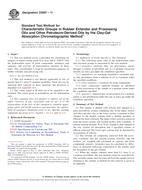
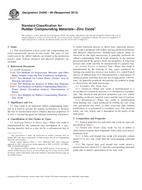 ASTM D4295-89(2012)..
ASTM D4295-89(2012)..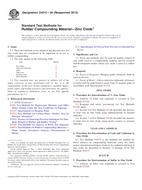 ASTM D4315-94(2012)..
ASTM D4315-94(2012)..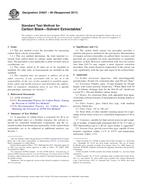 ASTM D4527-99(2011)..
ASTM D4527-99(2011).. ASTM D4528-88(2012)..
ASTM D4528-88(2012)..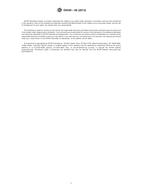 ASTM D4569-06(2012)..
ASTM D4569-06(2012).. ASTM D4571-06(2012)..
ASTM D4571-06(2012)..
 Cookies
Cookies
